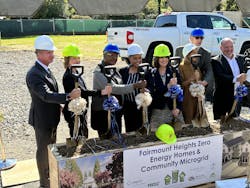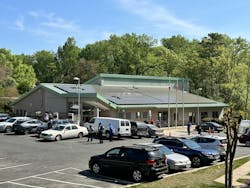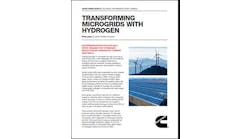‘Blown Away’ by Appetite for Microgrids, Maryland Resilience Program Boosts Funding to $6 Million for FY 2024
In 2021, it was clear from the response to the Resilient Maryland program – which was launched in 2020 – that the need for microgrids was booming.
“We were blown away. I had no idea the appetite was that big,” said Brandon Bowser, clean energy and section chief at the Maryland Energy Administration (MEA). When the agency released its funding for 2021 microgrid and resiliency projects, a food plant, universities, multifamily housing and other organizations sought funding. The program made awards to every sector of the state’s economy, he said.
Maryland is Home to our Microgrid 2024 Conference in Baltimore
April 22-24: Register now
The demand has not dropped, and the MEA has released $6 million in funding for fiscal year 2024, up from $2.7 million in fiscal year 2023. The budget for preconstruction planning is $800,000, capital support is $3 million and resiliency hubs is $2.2 million, he said.
Did the COVID-19 pandemic boost interest in microgrids?
Bowser theorizes that during the COVID-19 pandemic, when people were “watching the world fall apart,” their focus turned to the vulnerability of energy and other systems and the need for resilience.
“That’s when people started talking more about microgrids,” Bowser said.
The projects that have received awards from the program include a resiliency hub at Scotland Neighborhood Recreation Center, Frostburg State University and the Fairmount Heights Housing Initiative Partnership.
Resilience hub serves historically black community
The now complete Bette Carol Thompson Scotland Neighborhood Recreation Center project in Potomac provides a resilience hub for the historically black community, keeping the center powered during outages.
It includes a new rooftop solar system, a battery storage system, a natural gas generator and an LED lighting retrofit. It provides heat or cooling during weather emergencies, portable device charging and refrigeration for medications, breast milk and other critical needs. It also provides renewable energy during the day. The project represents the MEA’s heightened equity focus, said Bowser.
Under the Maryland Resilience program, resiliency hubs are special-use solar and storage microgrids sited in well-known community locations.
“If there’s a trusted community location – a church or community center that people know and trust – it’s a perfect candidate for resilience hubs as long as it has the infrastructure to support people,” he said. That includes emergency lighting, refrigeration and plug power. The location should also provide a space for people to be safe from extreme weather conditions.
Pepco and Block Energy partner on affordable home complex
For the Fairmont Heights project, Block Energy is working with utility Pepco to create zero-emission community energy systems for the affordable home complex.
Pepco will utilize Block Energy’s residential battery storage system combined with rooftop solar at six family homes. The two companies are working with nonprofit developer Housing Initiative Partnership, which will market the homes to first-time buyers who earn 80% or less of the region’s median income.
For the project, expected to be completed in summer 2024, the solar will be distributed across rooftops and the batteries will be split between units in the homes. There will also be a central battery, said Bowser.
The electric utility can control operation of the microgrid but can’t own microgrids in Maryland, where deregulation prohibits utilities owning generation.
“Everything will be a partnership, with the utility dynamically responding to needs of the community and the grid,” said Bowser.
Residents will not own the systems – so won’t have to make upfront payments – and will acquire solar energy under a power purchase agreement at affordable rates, he said.
“The idea is not only will they have affordable clean energy; they will also have resilience and reliability. This hedges against the negative impacts of grid outages,” said Bowser.
Waste heat from fuel cell will heat pool
And at Frostburg State University, a microgrid will include 3 MW of solar and a 1-MW fuel cell. Waste heat from the fuel cell will heat the athletic center’s pool. The fuel cell generates electricity based on a natural gas fuel source, Bowser said.
Such projects get a boost from Maryland’s net metering law, which allows for net metering of up to 200% of generation or 2 MW of capacity, whichever is lower. The first 100% of generation is compensated at utility retail rates and, after that, the wholesale rate, Bowser explained.
Maryland’s net metering law boosts DERs
“Net metering is one of the major drivers” for distributed energy resources (DERs), he said. “All the revenue streams available for DERs make a strong case.”
But those who apply for funding aren’t just looking to earn revenue or save money, he said.
“What I find surprising, it isn’t just the financial argument. People are really valuing resilience. Microgrids are a tool for them to combat challenges,” Bowser said.









